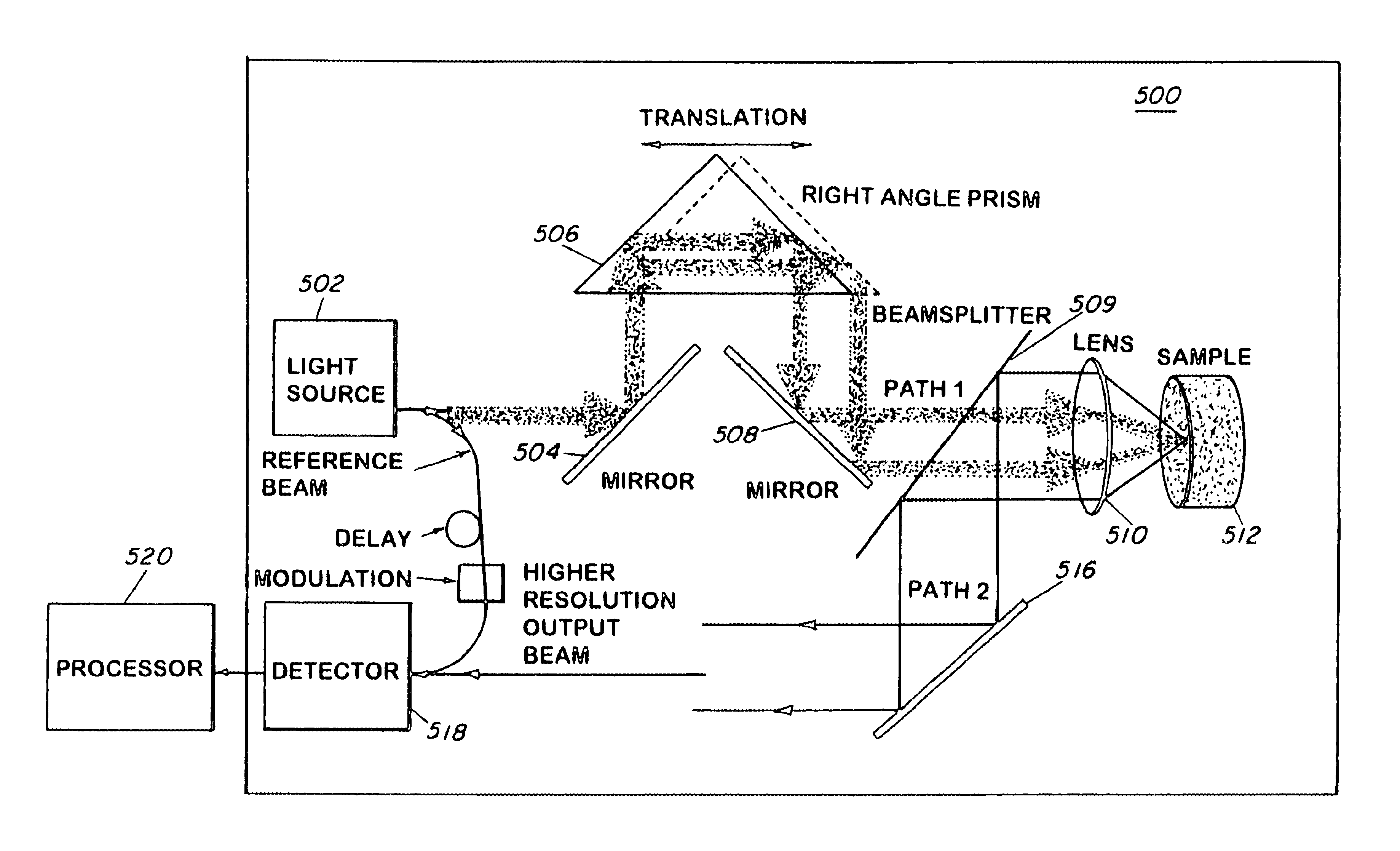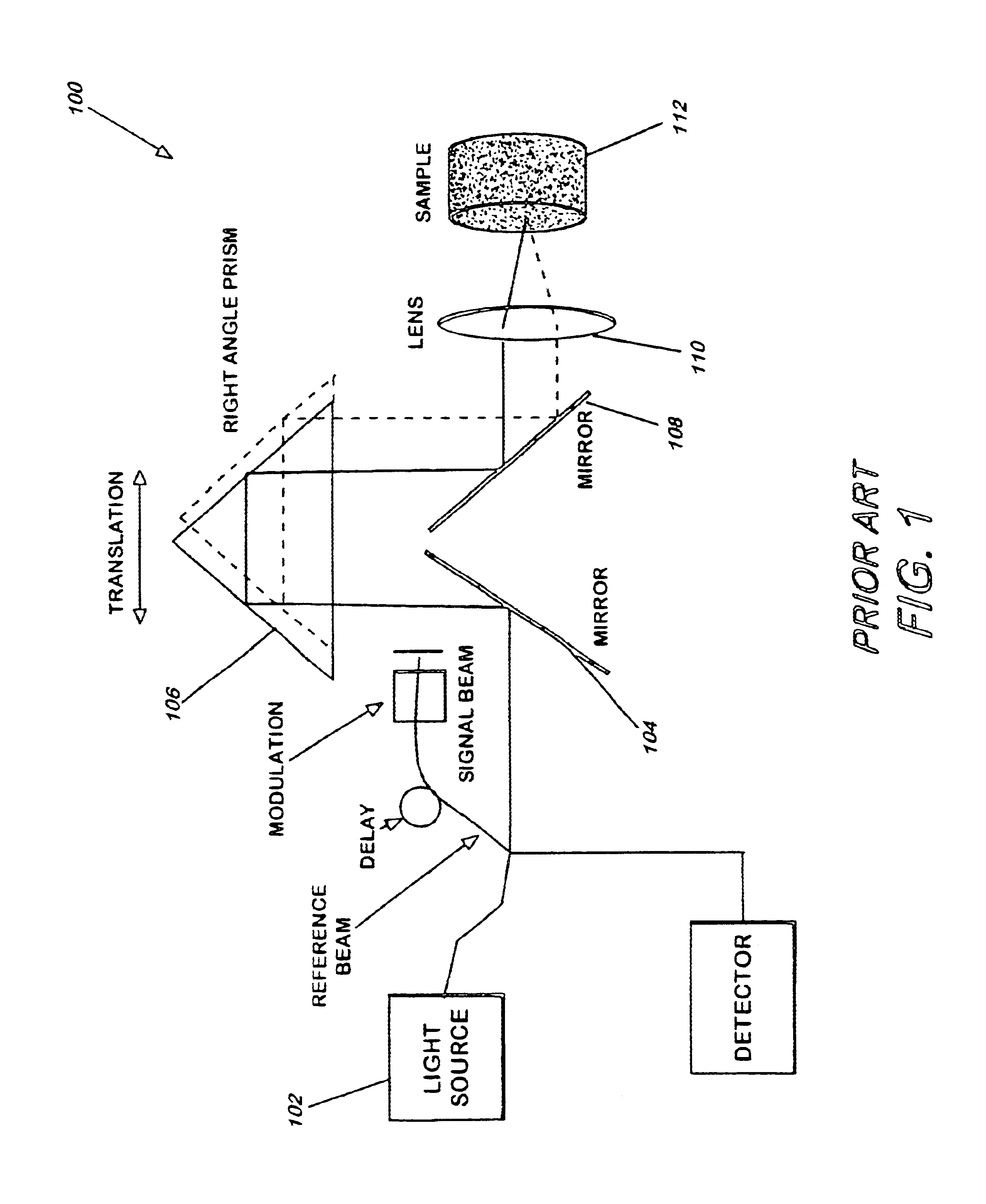Method and apparatus for reducing speckle in optical coherence tomography images
a technology speckle reduction, applied in the field of optical coherence tomography, can solve the problems of not being able to distinguish coherent msl from light from a region of interest (roi) in a sample, the total field will add destructively and be dark, and achieve the effect of simple and inexpensive speckle reduction system and method, without loss of optical resolution or reduction in image acquisition speed
- Summary
- Abstract
- Description
- Claims
- Application Information
AI Technical Summary
Benefits of technology
Problems solved by technology
Method used
Image
Examples
Embodiment Construction
FIG. 5 is a schematic of a low-coherence fiber interferometer based system for detecting subsurface defects in a sample object in accordance with a first example embodiment of the present invention. Specifically, apparatus 500 is shown to include a low coherence light source 502 emitting an output beam that is split into an input signal beam and a reference beam. The input signal beam is reflected via a mirror 504 and a mirror 508. The incident light beam is then made to focus on sample 512 via lens 510. The angle of incidence of incident light beam that is made to focus on the sample 512 is changed by translating the input signal beam using a right angle prism 506 in front of the lens 510. Translation of the prism 506 along its hypotenuse translates the input signal beam while maintaining a constant optical path length of the beam.
Light scattered from the sample 512 is reflected back in the incidence direction and completely repeats the path of the incident beam to be detected by d...
PUM
| Property | Measurement | Unit |
|---|---|---|
| depth | aaaaa | aaaaa |
| scan size | aaaaa | aaaaa |
| optical coherence tomography | aaaaa | aaaaa |
Abstract
Description
Claims
Application Information
 Login to View More
Login to View More - R&D
- Intellectual Property
- Life Sciences
- Materials
- Tech Scout
- Unparalleled Data Quality
- Higher Quality Content
- 60% Fewer Hallucinations
Browse by: Latest US Patents, China's latest patents, Technical Efficacy Thesaurus, Application Domain, Technology Topic, Popular Technical Reports.
© 2025 PatSnap. All rights reserved.Legal|Privacy policy|Modern Slavery Act Transparency Statement|Sitemap|About US| Contact US: help@patsnap.com



